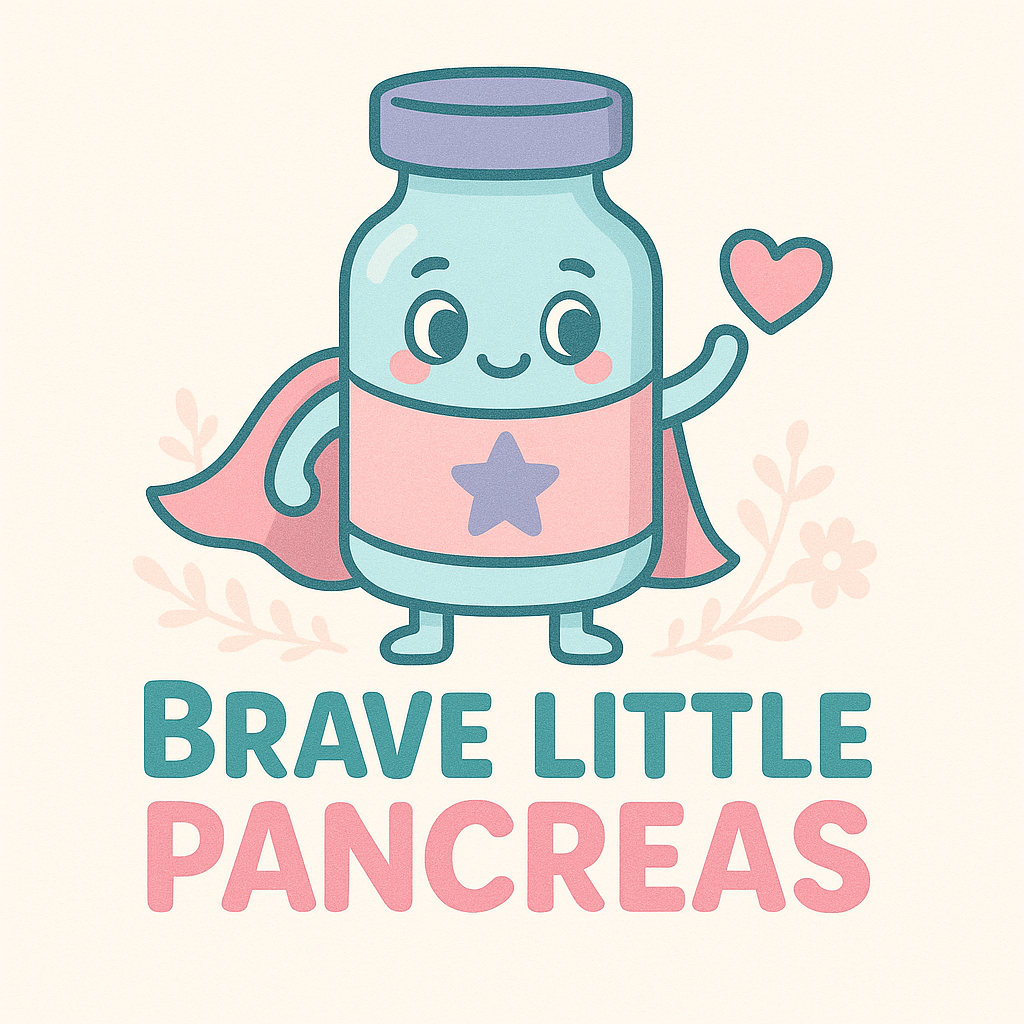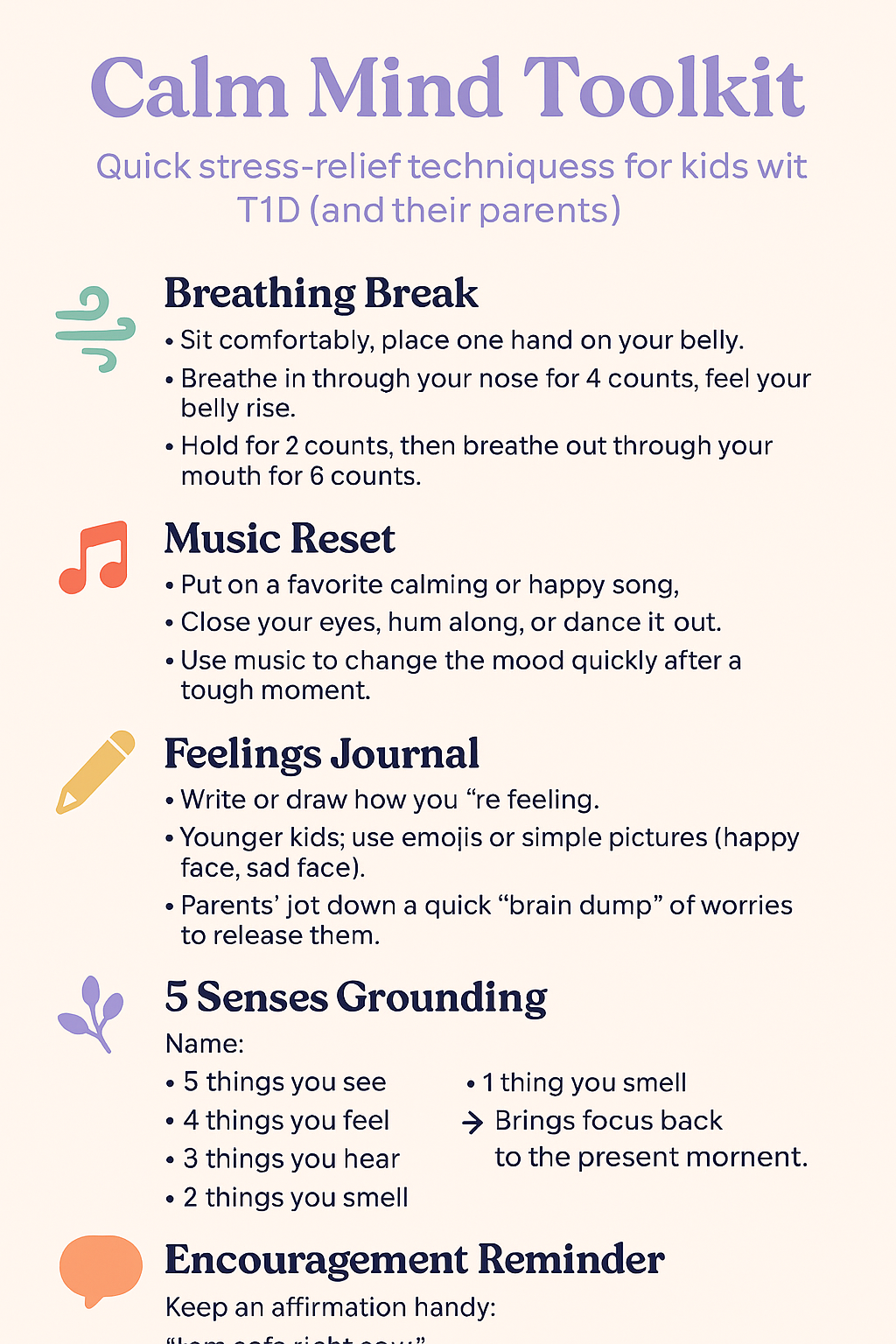In this lesson, you’ll learn:
✔️ Why emotional and mental health are just as important as physical care
✔️ How T1D can affect your child’s feelings (and yours)
✔️ Strategies for building resilience and reducing stress
✔️ When to seek extra support from professionals
Why Emotional Health Matters
Managing Type 1 Diabetes is not just about numbers — it’s about feelings, too. Kids may feel scared, frustrated, or different from their friends. Parents often feel guilt, stress, or burnout. These emotions are normal and deserve attention.
Supporting emotional health helps your child:
Cope with daily diabetes care
Build confidence and independence
Stay engaged at school and activities
Avoid long-term diabetes burnout
Common Emotional Challenges
For Kids
Feeling “different” from peers
Frustration with frequent checks and injections
Fear of lows or highs, especially at school or sleepovers
Anxiety about sports, parties, or trips
For Parents
Worrying about your child’s safety 24/7
Feeling overwhelmed by constant care tasks
Guilt (“Am I doing enough?”)
Strain on relationships, work, or family balance
Strategies That Help
Build Routines with Flexibility
Consistency creates security, but leave space for fun and normalcy.
Encourage Open Conversations
Let your child express feelings without judgment. Try:
“I know this feels hard. Do you want to talk or just need a hug?”
“It’s okay to be mad at diabetes — I get mad at it, too.”
Use Stress-Relief Tools
Breathing exercises, mindfulness apps, or calming music
Physical activity (walks, sports, dance)
Creative outlets (drawing, journaling, crafts)
Create Support Systems
Connect with other T1D families through groups or online communities
Involve teachers and coaches so your child feels safe everywhere
Don’t hesitate to lean on friends and family
When to Seek Professional Help
If your child shows ongoing signs of sadness, anxiety, withdrawal, or anger — or if you feel overwhelmed yourself — it may be time to connect with:
A mental health counselor or therapist
A diabetes educator or social worker
Your child’s care team for additional support
Quick stress-relief techniques for kids with T1D (and their parents)
🌬️ Breathing Break
Sit comfortably, place one hand on your belly.
Breathe in through your nose for 4 counts, feel your belly rise.
Hold for 2 counts, then breathe out through your mouth for 6 counts.
Repeat 3–5 times.
🎶 Music Reset
Put on a favorite calming or happy song.
Close your eyes, hum along, or dance it out.
Use music to change the mood quickly after a tough moment.
✍️ Feelings Journal
Write or draw how you’re feeling.
Younger kids: use emojis or simple pictures (happy face, sad face).
Parents: jot down a quick “brain dump” of worries to release them.
🌿 5 Senses Grounding
Name:
5 things you see
4 things you feel
3 things you hear
2 things you smell
1 thing you taste
👉 Brings focus back to the present moment.
🧃 Snack & Reset
Sometimes emotions flare because of blood sugar shifts.
Pause, check levels if needed, have a snack or drink.
Pair it with a calm activity (reading, coloring, or cuddling).
🏃 Movement Break
Quick walk, stretching, or jumping jacks.
Movement helps release stress and boost energy.
💬 Encouragement Reminder
Keep an affirmation handy:
“I am safe right now.”
“Diabetes doesn’t define me.”
“I can handle this one step at a time.”
✨ Parent Tip: Use these tools together — sometimes a snack + music + a hug is all it takes. Keep this list posted on the fridge or in your child’s diabetes kit for quick reference.
Next Lesson Preview: Building Confidence & Independence — helping your child take ownership of their diabetes care step by step.



